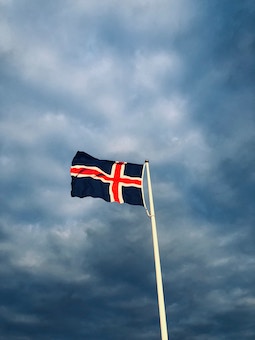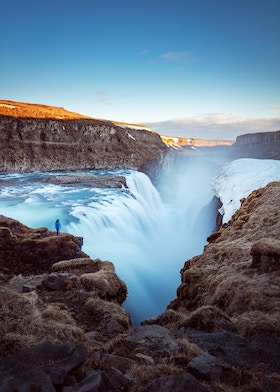Table Of Contents
The Krona is the name of Iceland’s currency. Its etymology can be traced with other currencies in Scandinavia such as the Danish Krone, the Norwegian Krone, and the Swedish Krona.
Krona Money Denominations
The Krona is denominated as follows:
Banknotes
- 500
- 1,000
- 2,000
- 5,000
- 10,000
Coins
- 1 – Silver
- 5 – Silver
- 10 – Silver
- 50 – Gold
- 100 – Gold
Believe it or not, the majority of Icelanders prefer to use credit or debit cards to pay for their purchases instead of cold cash.
A Brief History Of The Krona

When Iceland was under Danish rule, the country used the Danish Krone as its official currency. The Danish Krone was in circulation until 1885.
The Krona became the official currency of Iceland after Denmark granted the country autonomy in 1918. The initial notes that were circulated included the 5, 10, and 50. Today, these banknotes are circulated as coins.
The production of the Krona was handled by different banks throughout its history. Some of these banks introduced a new denomination.
- Landssjóður Íslands – 1904
- Ríkissjóður Íslands – Introduced the 1 Krona note.
- Landsbanki Ísland – 1928; introduced the 25, 500, and 1,000 Krona banknotes
- Seðlabanki Íslands – Present day
The 25 and 10 Aurar or cents were the first coins of Iceland. These were produced and circulated in 1922. In 1925, the 1 Krona and 2 Krona coins were introduced. The 1 Krona remains in circulation in the present day. Although Iceland won its independence in 1944, the Royal Monogram was only removed in 1946.
When the Krona depreciated in 1967, the country circulated more coins:
- 10 Krona
- 50 Aurar
- 5 Krona
- 50 Krona
Iceland was hit by hyperinflation in 1981 which resulted in the revaluation of the Krona.

During this period, the currency’s factor was increased by 100. Likewise, new coins and banknotes were introduced in the market. Finally, the currency code was changed from ISI to ISK. The design of the present- day 500, 1,000, and 5,000 ISK banknotes are the same as the time of the reformation. The last time a new currency denomination was introduced was in 2013. This was the 10,000ISK.
9 Best Travel Tips On How To Budget Your Money In Iceland

- If you want to buy alcohol, do so at the airport upon your arrival. Alcohol can be purchased at cheaper prices at the airport. Also, you can only buy alcohol at specialty stores that have limited hours of operation.
- Save more money by buying your groceries at budget stores called “Bonus” or “Kronan”. These budget stores are open during regular working hours. Groceries are more expensive when bought at stores that open late in the day.
- Swimming in one of the local pools is a cheap way to have fun in Iceland.
- Iceland is a great tourist destination. The good news is there are many wonderful budget tours to choose from.
- Check out the rates at some of the hotels before booking at an Airbnb. You might be surprised that you can get a better, more affordable deal at a hotel than an Airbnb.
- Forget bottled water. Tap water is best in Iceland.
- Download the Appy Hour app which will help you locate wallet-friendly deals on drinks.
- Do some research on Iceland before flying out. Knowing where to go and what to do will help you stretch the value of your hard-earned Krona.
- Purchases over 6,000ISK are free of taxes as long as it involves clothing and souvenirs. To be sure, request for the tax-free receipt after you have made your purchase. In Iceland, VAT is computed at 7% and 25% on specialty items.